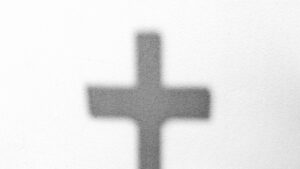Exploring the symbol of the cross through clipart offers a unique lens into how this iconic emblem is represented in various forms of media. The cross, a symbol steeped in historical, cultural, and spiritual significance, transcends mere religious iconography to become a universal sign of hope, sacrifice, and redemption.
Exploring the Symbolism of the Cross in Clipart
The cross symbol in clipart not only conveys religious meanings but also integrates historical and cultural contexts into digital art forms. It serves as a bridge between traditional symbolism and contemporary design, enriching visual communication.
Historical Significance
 The cross is profoundly anchored in history, dating back thousands of years. Initially, it symbolized suffering and death, particularly in the context of crucifixion practices in ancient civilizations. For example, in the Roman Empire, it was a method of execution for criminals and dissidents. However, with the rise of Christianity, the cross transformed into a symbol of sacrifice, hope, and resurrection. In clipart, this historical evolution is depicted through variations in the cross’s design—ranging from stark, simple lines representing the Roman execution device to more elaborate renditions adorned with jewels or rays of light, symbolizing divinity and spiritual awakening.
The cross is profoundly anchored in history, dating back thousands of years. Initially, it symbolized suffering and death, particularly in the context of crucifixion practices in ancient civilizations. For example, in the Roman Empire, it was a method of execution for criminals and dissidents. However, with the rise of Christianity, the cross transformed into a symbol of sacrifice, hope, and resurrection. In clipart, this historical evolution is depicted through variations in the cross’s design—ranging from stark, simple lines representing the Roman execution device to more elaborate renditions adorned with jewels or rays of light, symbolizing divinity and spiritual awakening.
Cultural Impact
Beyond its religious implications, the cross influences various facets of global culture. In many societies, it has transcended its original meanings to represent aspects of human rights, peace, and justice. For example, crosses appear on national flags, crests, and in humanitarian logos, symbolizing unity and faith across different cultures and belief systems. The adaptation of the cross in clipart reflects these diverse interpretations, enabling artists and designers to use this powerful symbol to convey complex messages succinctly.
Varieties of Cross Clipart
Different Styles and Designs
 Cross clipart caters to diverse aesthetic preferences and applications. The simplest forms include basic line drawings, which utilize clear, stark lines for crisp visual impact. These are often used in instructional settings or any context requiring clear, undistracted communication. On the other hand, detailed designs infuse elements such as rays of light, crowns, thorns, or angels, enhancing the visual storytelling of the clipart. For example, Celtic crosses in clipart are adorned with intricate knot patterns, signifying eternal life. Gothic-style crosses, distinguished by their pointed arches and elaborate carvings, echo the architectural grandeur of the era they represent.
Cross clipart caters to diverse aesthetic preferences and applications. The simplest forms include basic line drawings, which utilize clear, stark lines for crisp visual impact. These are often used in instructional settings or any context requiring clear, undistracted communication. On the other hand, detailed designs infuse elements such as rays of light, crowns, thorns, or angels, enhancing the visual storytelling of the clipart. For example, Celtic crosses in clipart are adorned with intricate knot patterns, signifying eternal life. Gothic-style crosses, distinguished by their pointed arches and elaborate carvings, echo the architectural grandeur of the era they represent.
Usage in Religious Contexts
In religious settings, cross clipart serves as a powerful symbol of faith and devotion. These icons are prevalent in Christian media, including newsletter headers, worship presentation backgrounds, and religious education materials. They often feature variations like the Crucifix, where the body of Christ is depicted on the cross, to underscore the theme of sacrifice in Christian teachings.
How to Use Cross Clipart Effectively
Selecting the Appropriate Style
 Choosing the right style of cross clipart is crucial. Different designs evoke different feelings and meanings. Simple, unadorned crosses work well for modern or minimalistic designs, focusing on clarity and straightforwardness. Conversely, crosses with intricate embellishments, such as floral or Gothic patterns, suit projects that require a historical or ornate aesthetic. For instance, a newsletter about a church anniversary might benefit from an elaborate cross design, enhancing the historical importance of the event.
Choosing the right style of cross clipart is crucial. Different designs evoke different feelings and meanings. Simple, unadorned crosses work well for modern or minimalistic designs, focusing on clarity and straightforwardness. Conversely, crosses with intricate embellishments, such as floral or Gothic patterns, suit projects that require a historical or ornate aesthetic. For instance, a newsletter about a church anniversary might benefit from an elaborate cross design, enhancing the historical importance of the event.
Considering the Color Scheme andMaintaining Appropriate Scaling
 The color scheme plays a significant role in the effectiveness of clipart. Traditional colors like gold, silver, and white often symbolize purity and sanctity, making them ideal for religious or solemn content. Bold colors, such as red or black, can be used to convey powerful emotions or draw attention. For example, red cross clipart might be used in advocacy materials to emphasize urgency or passion.
The color scheme plays a significant role in the effectiveness of clipart. Traditional colors like gold, silver, and white often symbolize purity and sanctity, making them ideal for religious or solemn content. Bold colors, such as red or black, can be used to convey powerful emotions or draw attention. For example, red cross clipart might be used in advocacy materials to emphasize urgency or passion.
Scaling the clipart correctly ensures that it complements, rather than overwhelms, your material. Large clipart works well as a focal point in poster designs or cover pages, while smaller icons might be appropriate for printed leaflets or web articles. It’s important to maintain resolution and avoid pixelation, which can detract from the overall impact of the design.

